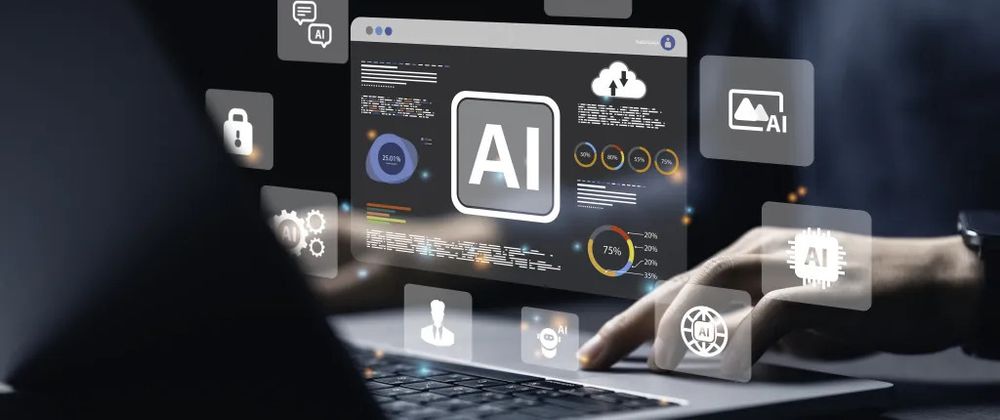TL;DR
AI Agent Architecture represents a major evolution in enterprise software—transforming static workflows into autonomous, intelligent systems that plan, reason, and act independently. This guide breaks down the core components, strategic blueprint, and deployment roadmap for enterprises, highlighting how companies like Azilen can unlock operational efficiency, data-driven automation, and long-term scalability through custom AI agents.
1. Introduction: Why AI Agents Are Reshaping Enterprise Software
In today’s rapidly evolving digital landscape, enterprises face increasing pressure to automate complex processes, extract real-time insights, and reduce manual workloads. Traditional RPA or static bots fall short when facing dynamic, multi-step tasks. This is where AI agents come in—self-directed systems capable of perceiving environments, making decisions, and acting autonomously.
For custom software solutions, integrating an AI Agent Architecture offers not just automation—but intelligent, adaptive performance. Enterprises that harness this approach can deploy task-specific agents across analytics, support, operations, and product development while maintaining control, compliance, and scalability.
2. What Is AI Agent Architecture?
An AI agent is more than a model—it’s a full-stack intelligent entity with memory, planning capabilities, and action execution. The architecture behind it must support:
-
Goal understanding
-
Contextual memory
-
Autonomous planning
-
Communication across systems
-
Execution of APIs or actions
-
Real-time learning and governance
This architecture transforms enterprise software into systems that can observe, reason, and act—automating business logic without continuous human intervention.
3. Core Components of AI Agent Architecture
Here’s a breakdown of the building blocks that make up a functional, enterprise-grade agent system:
| Component | Description | Business Relevance |
|---|---|---|
| Perception Module | Gathers data from APIs, sensors, databases | Enables real-time, data-driven decisions |
| Reasoning Engine | Applies logic, ML, or rules to assess situations | Facilitates autonomous thinking and insights |
| Decision Layer | Plans and prioritizes tasks based on goals | Supports strategic, goal-aligned actions |
| Executor (Actuator) | Executes commands, API calls, or triggers processes | Automates workflows without manual triggers |
| Memory/State Management | Retains context and stores past decisions | Enables long-running tasks and personalization |
| Communication Layer | Facilitates interaction between multiple agents | Supports collaboration and orchestration |
| Monitoring & Governance | Ensures secure, compliant, and ethical behavior | Essential for enterprise-grade deployment |
4. Enterprise Blueprint for Deploying AI Agent Architecture
Step 1: Define the Business Objective
Identify a high-impact area where intelligent automation can add value. Start with focused use cases—such as report generation, sales qualification, or ticket triage.
Step 2: Map the Data & Environment
List the systems, APIs, and databases agents will interact with. Define access levels, data types, and governance constraints.
Step 3: Design Modular Agents
Create specialized agents for each task:
-
Data Collector – Gathers and preprocesses data
-
Insights Generator – Analyzes and interprets
-
Decision Engine – Makes contextual decisions
-
Action Executor – Performs or triggers actions
This modularity allows flexibility and easier debugging.
Step 4: Implement Orchestration Layer
Use a centralized or decentralized planner to assign tasks and manage dependencies. Agents can work in parallel or in sequences based on the workflow.
Step 5: Integrate Memory and Context Handling
Deploy memory frameworks to retain context across sessions or tasks. This makes agents more responsive and reduces redundancy.
Step 6: Monitor, Audit, and Govern
Implement real-time monitoring, feedback loops, redaction systems, and audit logs to ensure agents remain compliant and transparent.
5. Key Business Benefits of AI Agent Architecture
| Benefit | Enterprise Advantage |
|---|---|
| Process Autonomy | Automate repetitive, rule-based, and decision-heavy tasks |
| Cost Reduction | Cut down on manual workloads, repetitive roles, and errors |
| Scalability | Easily deploy more agents across departments or services |
| Real-time Intelligence | Enable insights, reactions, and forecasts as events unfold |
| Security & Compliance | Isolate data, implement governance, and ensure auditability |
| Cross-system Integration | Agents can interact with CRMs, ERPs, and databases natively |
6. Why Enterprises Must Adopt Agent Architecture Now
Future-Proofing Through Modularity
Instead of reengineering entire platforms, enterprises can deploy agents alongside legacy software—offering intelligent upgrades without system overhauls.
Shifting from Centralized Data to On-demand AI
AI agents can access and reason with data on the fly, reducing the need for massive, outdated data lakes and minimizing risk exposure.
Industry Momentum & Ecosystem Growth
With increasing standardization in multi-agent orchestration and communication protocols, the ecosystem is ready for scalable enterprise adoption.
7. Azilen’s Edge in Enterprise AI Agent Development
Azilen’s AI agent services are rooted in enterprise-grade product engineering. The company brings:
-
Custom Agent Frameworks for specific verticals like FinTech, HealthTech, and Smart Manufacturing
-
Compliance-first Deployment with robust monitoring and controls
-
Full-cycle Support from architecture to post-deployment monitoring
-
Edge-AI and IoT Integration for real-time, physical-world automation
Azilen doesn’t just build smart agents—it builds business-ready ecosystems that align with strategic goals and enterprise standards.
8. Actionable Next Steps for CTOs and Product Leaders
| Stage | Action |
|---|---|
| Discovery | Identify 2–3 automation use cases per department |
| Design | Collaborate on blueprinting architecture with experts |
| Pilot | Deploy 1–2 narrow-scope agents in a low-risk setting |
| Measurement | Track ROI: time saved, accuracy improved, satisfaction |
| Scale | Expand agents across functions and adopt orchestration |
| Govern | Set up audit logs, feedback loops, and compliance rules |
Conclusion
AI Agent Architecture marks a transformative leap in how enterprises automate and scale. It’s no longer about automating steps—it’s about delegating intelligent goals to systems that can learn, act, and adapt.
For enterprises aiming to stay competitive in 2025 and beyond, the move toward AI agent-based systems is not optional—it’s strategic. With a proven track record, vertical expertise, and a future-ready stack, Azilen is uniquely positioned to help forward-looking companies build, deploy, and govern intelligent agent ecosystems.




Top comments (0)